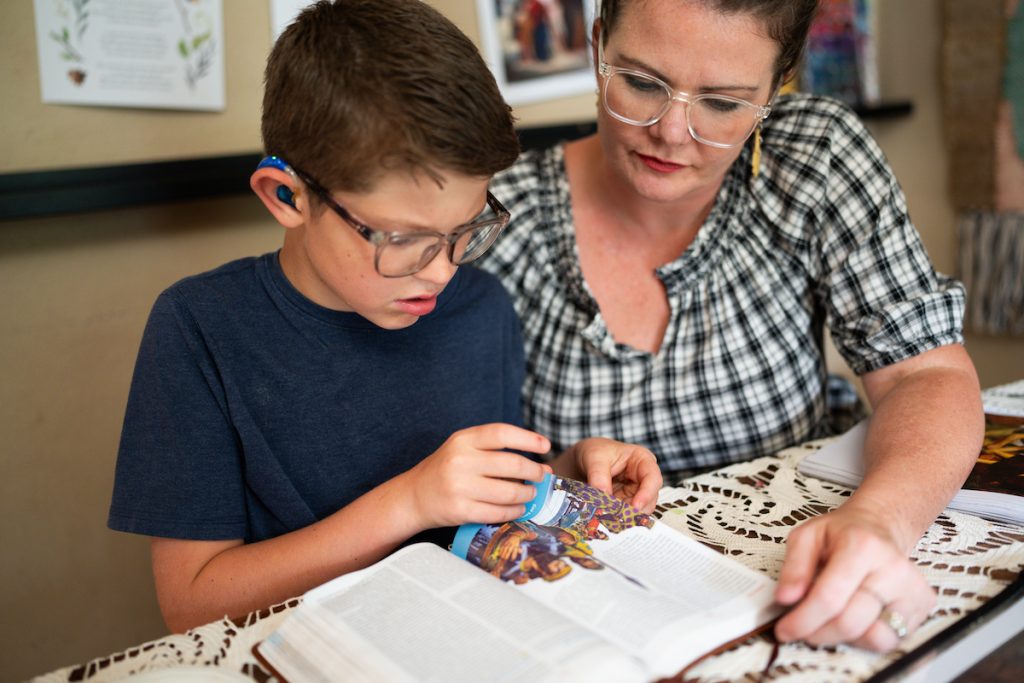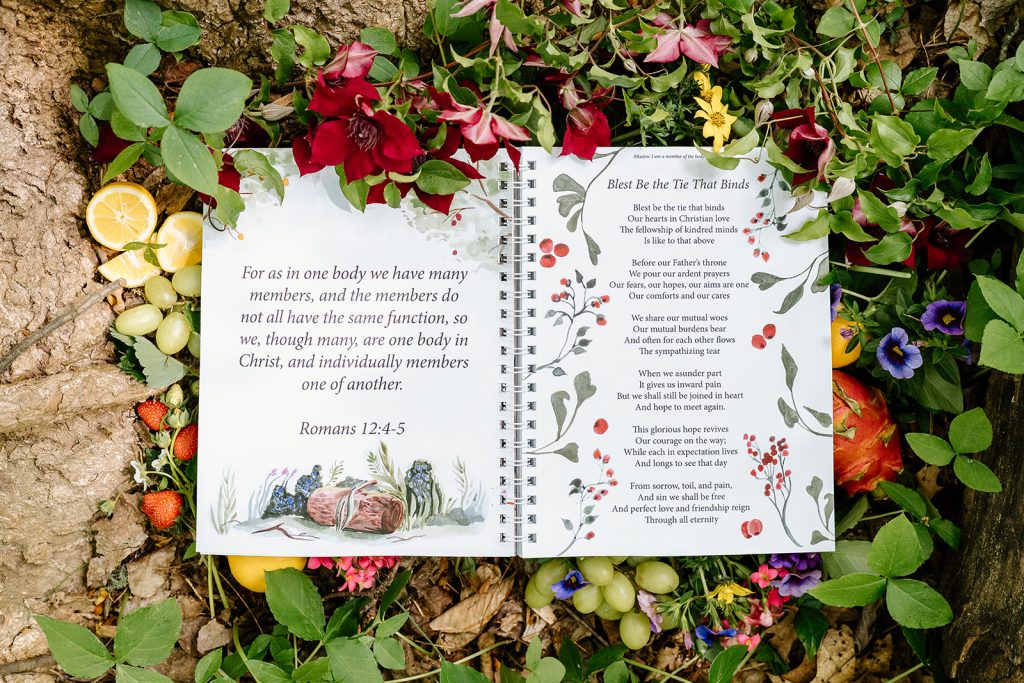Imagine this: I’m at the stove, stirring dinner, a fussy infant in one arm. My toddler, quiet for a moment, suddenly appears behind me, triumphant, and pours a scoop of dirt onto the rug. At the exact same time, my five-year-old wails, accusing her older brother of snatching her toy and scratching her. He’s stomping up the stairs, shouting denials, his voice thick with indignation. I can feel my face flush, a wave of chaos and emotions swirling not just around the room, but intensely inside me.
As adults, we learn to identify these intense feelings and, usually, to control our impulses. Yet, even at 35, with years of practice, there are still moments when those “big feelings” overwhelm me, and I react poorly. If this is true for us, imagine how much harder it is for children who lack our experience and learned coping mechanisms.
This is a common scene in my home, a swift shift from peace to pandemonium that many parents can relate to. If only I could snap my fingers and instantly calm the storm of emotions in all of us! Since that’s not possible, it’s crucial for me to model healthy emotion regulation for my children. In that moment of intense overwhelm, I might take a deep breath, ask my older children to step outside for a minute, and create space to address one issue at a time and regain my own composure before tackling their squabble. I’ve learned my triggers and developed strategies to help myself practice self-control.
Emotional regulation isn’t an innate skill; it must be taught, modeled, and practiced. As parents, this is one of the most vital lessons we can impart. A child’s ability to identify and regulate their emotions profoundly impacts their family and peer relationships, attention skills, and long-term mental health. A child who constantly throws tantrums and struggles with self-regulation can strain household relationships and find it difficult to make or keep friends. The inability to manage emotions can manifest as anger, aggression, withdrawal, or anxiety. I’ve already seen glimpses of these challenges in one of my young children, which has spurred me to be more intentional in this area.
After numerous messy situations where I found myself trying to untangle my children’s emotions and guide them toward better management, I realized I needed a proactive, intentional approach. I needed something both fun and visual. That’s why I decided to create a go-to tool: the Feelings Wheel & Calm Down Cards Set.
In this blog post:
- Using the Feelings Wheel to teach children how to regulate their emotions
- How to help kids handle big emotions
- Intentional parenting resources from Treehouse Schoolhouse
Using The Feelings Wheel to teach children how to regulate their emotions

As you can see on the Feelings Wheel, the emotions I used are separated into four colors. This is known as the Four Zones of Regulation and is often used in classrooms and in occupational therapy. I simplified the feelings and created simple visuals for each one. Here is a quick summary about the four zones.
The Green Zone
The green zone is used to describe when your child is in a calm state and ready to talk, listen, and learn. The emotions in this zone are calm, happy, and focused. This is the “goal zone”. If you are trying to read or do schoolwork and your child seems distracted, you could talk with your child about their feelings and how to get back to this zone before continuing lessons.
The Yellow Zone
The yellow zone is a place where the child typically still has some control, but they aren’t in the ideal zone for learning and relating. In this zone I listed anxious, silly, and confused.
The Red Zone
The red zone describes a heightened state of intense emotions. When a child is in the red zone, they usually really struggle to control their reactions. This is the zone kids are in during meltdowns. Here I listed angry, frustrated, and scared.
The Blue Zone
When a child is in the blue zone they are usually still in control, as you are in the yellow zone, but with low energy emotions. Here I listed tired, sad, and bored.
I share below some different ways you can use the wheel to teach about feelings and help your child through big emotions.
Calm Down Cards

The Calm Down cards are simply that–strategies put on cards, so that in the heat of a moment, your child can choose a card to help them calm down and “get back to the green zone.” By having the cards as options, children will feel in control and empowered while making a decision on how to regulate their emotions. Ultimately, the goal is for them to do this without prompts or visual support, but the cards are a great tool for the “in-between.” I recommend looking through the cards and choosing a few to offer your child as appropriate options, rather than all of them at once.
How to help kids handle big emotions

Identify what kids are feeling
It’s common for kids to struggle with identifying their feelings. Recently we went to my sister’s house for a playdate and my son helped me pack peanut butter and jelly sandwiches for lunch beforehand. The kids swam and played and when lunchtime came, my sister offered to cook for everyone, so I left the sandwiches in my lunch box and we served the kids spaghetti instead. My son started to cry and wanted to be alone. He kept saying he was too embarrassed to go sit and eat with his cousins. I was wondering why he was embarrassed so I could help him through it. I asked the cousins and his siblings if something happened before I came out to serve lunch. When I finally got him to talk about his feelings he said, “Mom, I just feel so embarrassed about having spaghetti for lunch. We always have that for dinner, not lunch! We packed sandwiches, remember? I really wanted to have the sandwich I made.” What he was really feeling was disappointment, not embarrassment.
Helping our child understand what they are feeling is really important. If they don’t know, then often we can’t help them through it. One way we can teach them is by taking time to teach the words for different emotions while they are not in the middle of the emotion. This is especially effective while reading stories to them. It can be any story because every story has situations where emotions are felt and expressed! You can pause reading and chat about what the characters may be feeling. I have been keeping our Feelings Wheel nearby during read-alouds so the kids can use it to visually identify and label emotions.
Another way is to model it! You can use the Feelings Wheel to talk about things that made you angry or excited and spin the arrow to those emotions. Then, encourage them to talk to you about their day and come alongside them in identifying their own feelings.
You can also play a charades-type game, pretending to feel a certain emotion and have your child spin the arrow to their guess. Talk about how your body looks and physically feels when you pretend to be each emotion on the wheel. For example, “I was pretending to be frustrated. Did you see that my mouth turned down, my forehead crinkled, and my teeth and fists clenched? If I was actually frustrated, my face might feel hot too.”
Express and regulate emotions
The next step to helping children handle their big emotions is to teach them how to appropriately express them. The first step to expressing their emotions is communicating them. The Feelings Wheel is so helpful for this because children are so visual and they can point or turn the spinner to the appropriate emotion that they are experiencing.
Take some time to help your child come up with appropriate ways of expressing their emotions, before the big emotion hits! You can do this by looking over the calm down cards and talking about which ones would help them in certain situations. You can also brainstorm new strategies your child can use the next time they feel a certain way and write them on the blank cards provided.
For example, you may say, “Remember when you got so frustrated when you couldn’t put on your helmet and so you threw it across the yard and stomped? What could you have done instead that would have calmed you down and helped the situation?” It might be one of the options on the cards or a combination of them.
In daily life, encourage your child to express their emotion and praise them when they do it in appropriate ways. Make sure to point out the specifics. For example, you might say, “I know you were anxious when you were playing that game but I love how you took big, deep breaths instead of quitting when your sister was winning.”
Use Scripture to help children manage their emotions
One thing I like to include in training my children in this area is what God says about our emotions. For starters, I remind my children that self-control is a fruit of the Spirit and that without God’s help, we will fail. We need his heart-changing love to help us choose kindness and gentleness in hard situations. They have seen me sing or pray the name of Jesus in a moment when I am tempted to scream. They may giggle or roll their eyes when I belt that out, but deep down I hope they remember who I turn to. We have also memorized scripture that has directly targeted some of those negative reactions, and I remind them of those passages as we talk through this. I pray with them in those big-feeling moments and ask God to help them identify what they feel and give us ideas to work out those feelings.
Here are a few of our go-to passages:
- “He who is slow to anger is better than the mighty, And he who rules his spirit, than he who captures a city.” Proverbs 16:32
- “For the grace of God has appeared that offers salvation to all people. It teaches us to say “No” to ungodliness and worldly passions, and to live self-controlled, upright and godly lives in this present age.” Titus 2:11-12
- “A fool always loses his temper and displays his anger, but a wise man holds it back.” Proverbs 29:11
Intentional parenting resources from Treehouse Schoolhouse
Rooted Family Bible Curriculum

Rooted Family Bible Curriculum is a home Bible study written to cultivate deep roots in the rich soil of God’s Word.
Embark on a journey of the heart guided by Scripture, beauty, art, hands-on connections, and family discussion. Instill courage, confidence, and Biblical character in your children by rooting them in their heavenly identity, their devotion to God, and the wisdom of Scripture. It’s about giving children a solid root system in the Word of God before we launch them into the world.
Rooted is an 18-week family Bible curriculum. Each week centers around one declaration statement related to the themes of Identity, Devotion, and Wisdom. Rooted incorporates beauty subjects with Bible study including daily Scripture readings, discussion and prayer prompts, hymns, poetry, and art study.
Flourish Family Bible Curriculum

Flourish Family Bible Curriculum is an 18-week family Bible curriculum. Each week centers around one declaration statement related to the themes of Mission, Virtue, and Love. Flourish incorporates beauty subjects with Bible study including daily Scripture readings, discussion and prayer prompts, hymns, poetry, and art study. Enjoy the rhythms of connection and beauty found in our beloved Rooted Family Bible Curriculum with a focus on bearing fruit through our lives in the world around us.
Daily Rhythm Bundle

Help manage your children’s expectations and responsibilities with the Daily Rhythm Bundle. This set will add eloquence to your homeschool space and a peaceful rhythm to your homeschool day.
Children are highly visual–they can feel particularly out of control when they don’t know what to expect in their day. That’s why we recommend using a visual schedule to support your children from the time they are very young. Rather than trying to stick to a rigid schedule, this set helps you create a general rhythm for your days. The daily rhythm worksheet is laminated and dry erase and the cards can be moved around offering you flexibility and adaptability.
When my kids were little, I loved using the Feelings Wheel and Calm Down Cards with my children and they have proved to be helpful in so many situations! I hope it is a helpful tool for your family as well.



